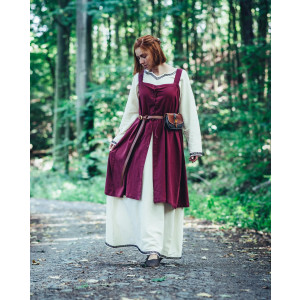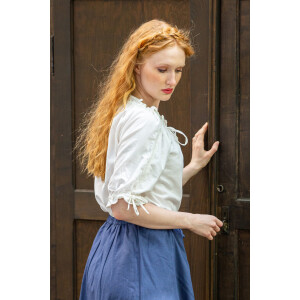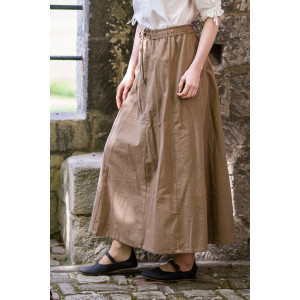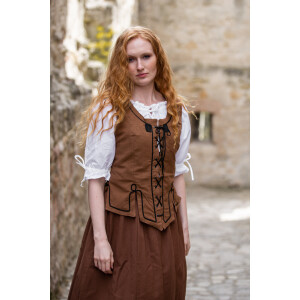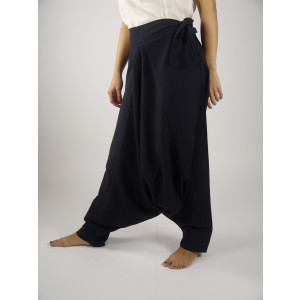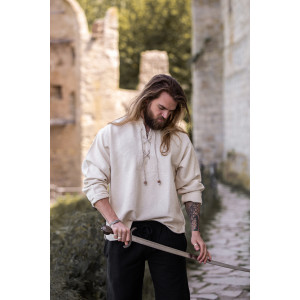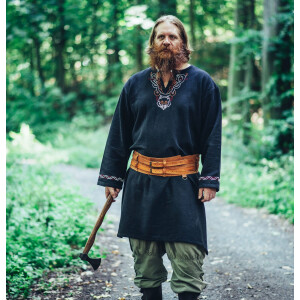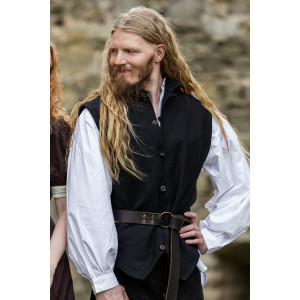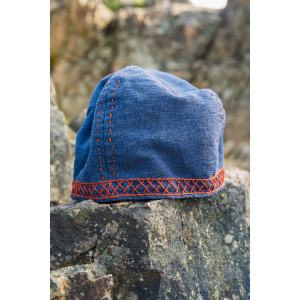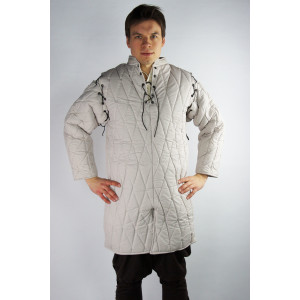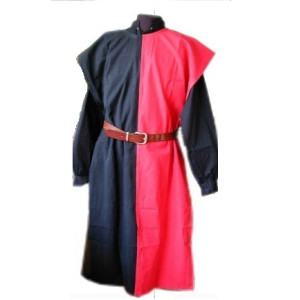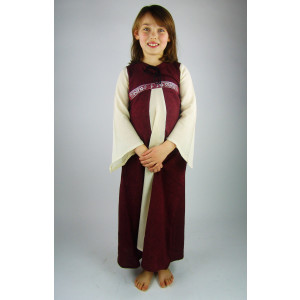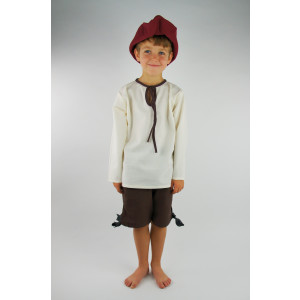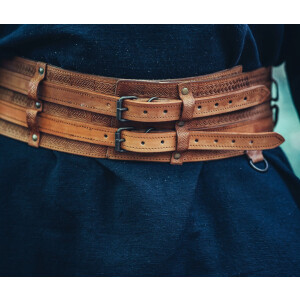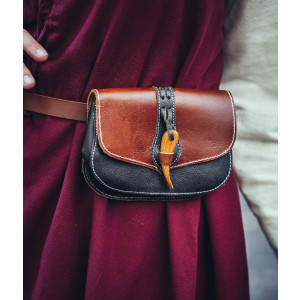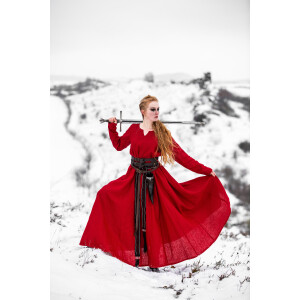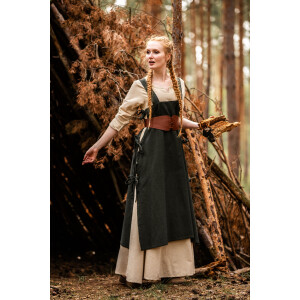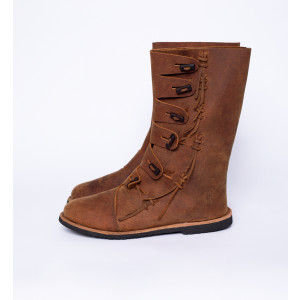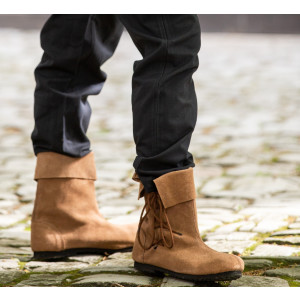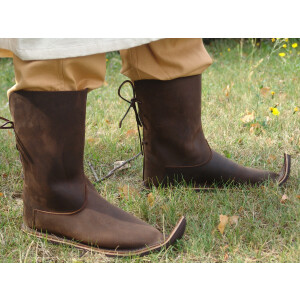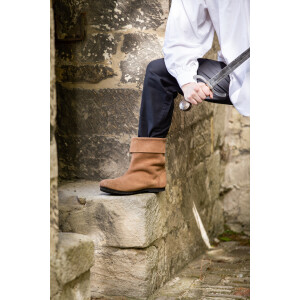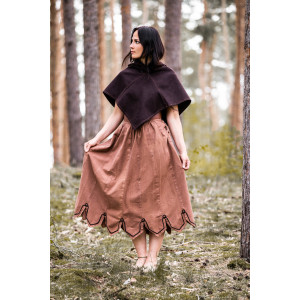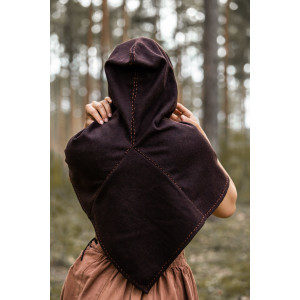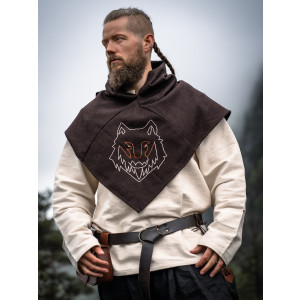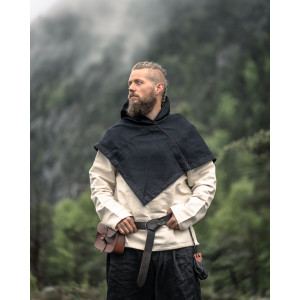SKJOLDHAMN GUGEL
- Available immediately
-
Delivery time: 1 - 2 days (DE - int. shipments may differ)
- Available immediately
-
Delivery time: 1 - 2 days (DE - int. shipments may differ)
- Available immediately
-
Delivery time: 1 - 2 days (DE - int. shipments may differ)
Historical Background of the Skjoldehamn Hood
The Skjoldehamn Hood, a hood discovered in a Viking grave in Norway, holds remarkable historical significance. Its discovery in the grave site has provided valuable insights into Viking clothing and fashion. The historical context of the Skjoldehamn Hood is based on thorough research and archaeological findings in the Norwegian grave site. The hood, found in an Iron Age burial mound in the Lofoten Islands, is believed to date back to the 10th century, making it a significant and unusual find in Viking history. The interpretation of the Skjoldehamn Hood involved analyzing its design, construction, and materials. Researchers used various scientific techniques and expertise to determine the purpose and significance of the garment. It is believed to have served as a practical and protective clothing item, offering warmth and protection from the elements.
Importance and Significance of the Skjoldehamn Hood in Viking Culture
The Skjoldehamn Hood in Viking culture represents an important garment with deep cultural background. The hood was an essential part of medieval clothing, particularly for travelers and workers. It served as protection against the wind and weather, making it a practical accessory in the daily life of the Vikings. Characterized by its hood and cloak reaching to the shoulders, the Skjoldehamn Hood is indispensable for reenactment and historical enactments. It is closely connected to the Viking lifestyle and provides a deeper understanding of their culture and traditions. At LEONARDO CARBONE, we offer the Skjoldehamn Hood in various versions for men and women, emphasizing the significance and versatility of this garment. Through its function, history, and cultural significance, the hood is an essential part of Viking culture, contributing significantly to the representation and preservation of this traditional way of life.
The Square Basic Shape of the Skjoldehamn Hood
The Skjoldehamn Hood, discovered in a pagan grave from the first half of the 11th century, is distinguished by its square basic shape with a wide brim ending characteristically with a corner on the chest. Available in various sizes, the hood offers individual fit for each wearer. The Skjoldehamn Hood is a fascinating example of the craftsmanship and material knowledge of the time. It is evident that the creation of this headwear was done with great care and precision. The square basic shape gives the Skjoldehamn Hood a unique aesthetic and sets it apart from other traditional hoods. With its history and unique design, the Skjoldehamn Hood is a captivating artifact from the past and a sought-after collector's item for historians and medieval fashion enthusiasts.
Materials Used in the Manufacturing of the Hood
In the manufacturing of our hoods, various materials are used. Wool is often used for its warmth and durability. Polyester is preferred for its wrinkle-free properties and ability to wick moisture. Nylon is valued for its high tear resistance and water resistance. Cotton is used for its breathability and comfortable wear. Viscose, a synthetic fiber made from natural materials, is appreciated for its softness and silky texture. The hoods are made from a combination of these fabrics to achieve the desired properties.
Function of the Hood in Medieval Clothing
The hood was a versatile and practical garment in the Middle Ages. As headwear, it served to protect against weather conditions like rain, snow, and wind. It could also be worn for thermal insulation, particularly important during colder months. Additionally, the hood was a symbol of various social status groups and served as a fashionable accessory. With its deep hood and loose-fitting fabric, the hood provided effective protection against wind and rain, making it a perfect companion for any weather. Its wide shape allowed it to be worn over other clothing items, offering additional protection. The hood was useful in various weather conditions, including rain, snow, wind, and cold. Its properties as thermal insulation and protection from the elements made it an indispensable part of medieval wardrobe. Overall, the hood was a versatile garment that fulfilled both functional and aesthetic purposes and was therefore widespread in medieval society.
Other Clothing Items and Accessories Often Worn with the Hood
In the Viking era, tunics, cloaks, and leather boots were often worn with the hood. These clothing items were typically made from coarse materials like wool or leather and had functional cuts for everyday use. The hood was often combined with a belt or brooch to keep it in place and add a touch of elegance. At that time, trousers and long-sleeved shirts were common and were often paired with a hood. This combination provided protection against the cold and weather. Accessories such as belts, bags, and jewelry were also commonly worn with the hood to fulfill practical functions like carrying tools or money. The hood was often paired with a cape or cloak for additional protection against rain and wind. This combination allowed people to move in the harshest weather conditions without damaging their clothing. Thus, the hood became an indispensable accessory in medieval attire. The hood's square base shape, characterized by a wide brim and distinctive corner resting on the chest, adds to its uniqueness. Available in various sizes, the Skjoldehamn Hood offers a custom fit for every wearer. This hood exemplifies the craftsmanship and material knowledge of its time, showcasing great care and precision in its making. The Skjoldehamn Hood stands out for its unique aesthetic and is a captivating piece of history, highly sought after by historians and medieval fashion enthusiasts. In crafting our hoods, we use a variety of materials, including wool for warmth and durability, polyester for its wrinkle-free and moisture-wicking properties, nylon for high tear resistance and water resistance, cotton for breathability and comfort, and viscose for its softness and silky texture. This combination of fabrics achieves the desired properties for our hoods. The hood played a versatile and practical role in medieval clothing, serving as a head covering to protect against weather elements like rain, snow, and wind, and as thermal insulation in colder months. It also served as a symbol of social status and a fashionable accessory. The hood's deep design and loose fabric provided effective protection, making it ideal for various weather conditions and an indispensable part of medieval attire. During the Viking era, hoods were commonly paired with tunics, cloaks, leather boots, belts, bags, and jewelry, forming a functional and stylish ensemble that protected against the cold and weather. The combination of a hood with a cape or cloak offered additional protection, making the Skjoldehamn Hood an essential accessory in historic Viking clothing.
